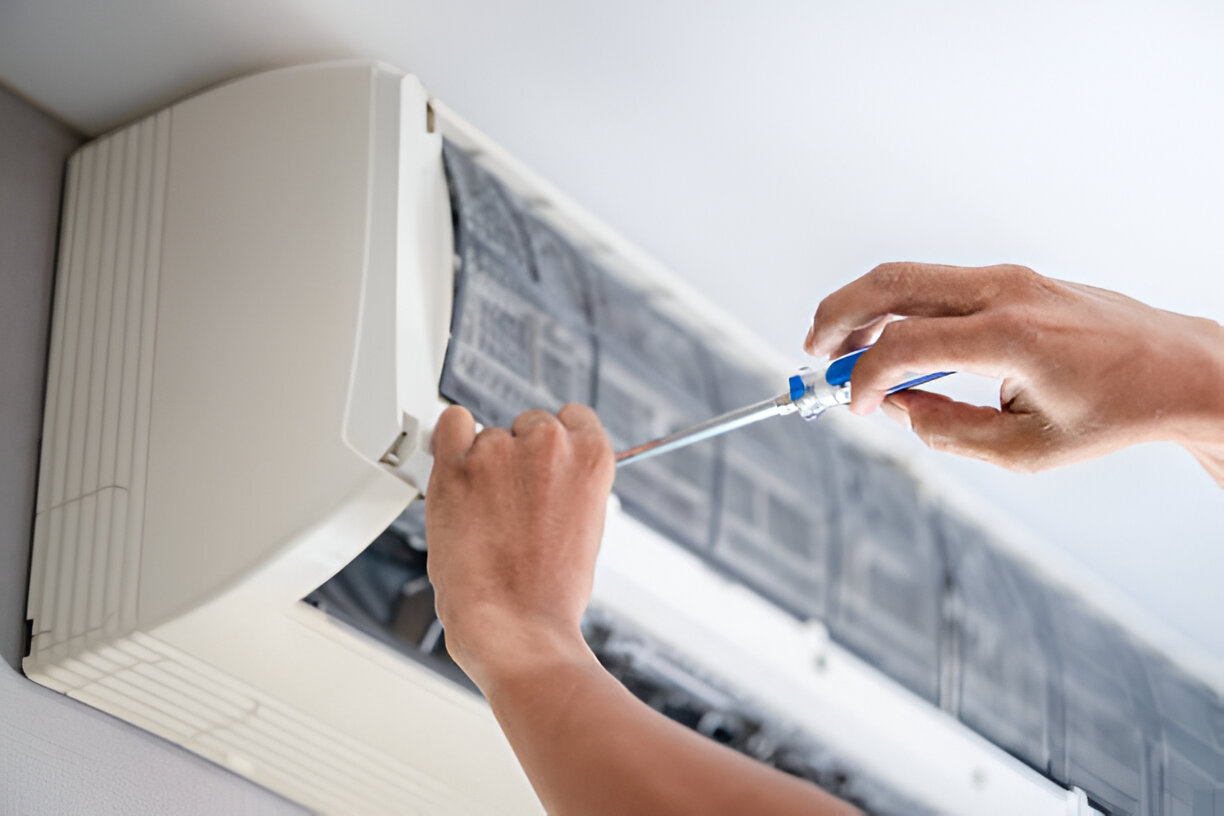
Mini Split AC in Mesa, AZ
Mini split AC systems are an ideal cooling and heating solution for Mesa, AZ homes that need zoned comfort, high efficiency, and flexible installation where ductwork is impractical. With long, hot summers, high dust loads, and seasonal monsoon humidity, Mesa households benefit from ductless mini splits because they deliver targeted comfort, lower energy use, and easier maintenance than many traditional systems.
Why choose a mini split AC in Mesa, AZ
- Zoned comfort: Independently controlled indoor units let each room maintain its own temperature. This is especially useful for living rooms, guest rooms, home offices, and converted garages common in Mesa.
- High efficiency: Modern inverter-driven compressors adjust output to match load, improving seasonal energy efficiency and reducing wear from constant cycling.
- No ductwork required: Ideal for older homes, additions, or spaces without existing ducts. Avoid duct losses and reduce dust and allergen circulation—a real benefit in Arizona dust-prone neighborhoods.
- Space and installation flexibility: Slim wall, ceiling cassette, or floor-mounted indoor units fit many room types and styles.
- Year-round comfort: Many mini splits are heat pump based, offering efficient heating in winter months without a separate furnace.
Common mini split issues in Mesa, AZ
- Reduced cooling during extreme summer peaks: High ambient temperatures push systems harder and can expose undersized units.
- Dust and debris buildup: Greater maintenance needs during dusty months and after monsoon storms can clog filters and coils.
- Frozen indoor coils: Restricted airflow or low refrigerant can cause icing, especially when filters are dirty.
- Communication errors between indoor and outdoor units: Fault codes can appear after power surges or wiring issues.
- Condensate drain clogs: Leaves, dust, or insect debris can block drainage and cause water leaks in interiors.
- Refrigerant leaks and low charge: Symptoms include poor cooling and long run times.
Sizing and selecting the right model
Proper sizing and model selection are critical for performance and longevity. Oversized systems cycle excessively. Undersized systems run constantly and struggle on Mesa's hottest days.
Key sizing considerations:
- Room square footage and ceiling height
- Sun exposure and glazing (west-facing rooms need more capacity)
- Insulation levels and attic ventilation
- Number of occupants and heat-generating appliances
- Use-case: bedrooms, master suites, home offices, or entire multi-room zoning
Guidance:
- Use a professional Manual J load calculation for accurate sizing. As a rough rule of thumb, many single-zone mini splits range from 9,000 to 18,000 BTU for typical rooms, but local heat loads in Mesa often push selections toward higher capacities in sun-exposed areas.
- Choose inverter variable-speed models for steady comfort and better efficiency in desert climates.
- Decide between single-zone systems (one outdoor to one indoor) and multi-zone systems (one outdoor to multiple indoor heads) based on room layouts and budgets.
- Consider warranty coverage, SEER/HSPF ratings, and whether the unit is a heat pump for winter comfort.
Warranties and maintenance recommendations
- Manufacturer warranties commonly cover parts and compressor for a period (often 5 to 10 years for parts, with longer compressor warranties on select models). Labor warranties vary by installer.
- Recommended maintenance:
- Clean or replace washable filters monthly during heavy use periods.
- Professional tune-up annually, ideally before the summer peak, including coil cleaning, refrigerant check, electrical inspection, and drain cleaning.
- Keep outdoor unit clear of debris, weeds, and dust. Trim vegetation to maintain recommended clearances.
- During monsoon season inspect for insect nests and ensure condensate lines and drains are unobstructed.
Troubleshooting common problems
- Unit not cooling well: Check dirty filters, blocked airflow, thermostat set correctly, and ensure outdoor unit is free of debris. If problems persist, have refrigerant charge and compressor operation checked.
- Indoor unit making noise: Inspect mounting, check fan balance, and confirm refrigerant flow. Loose panels or debris are common culprits.
- Water leaks inside: Inspect condensate drain for clogs and ensure proper slope. Confirm drain pan integrity.
- Remote or control failure: Replace batteries, verify wireless pairing, and check low-voltage wiring connections.
- Error codes on display: Note the code and consult the service manual. Many codes point to communication, sensor, or refrigerant issues requiring professional diagnosis.
Financing options and planning for Mesa homeowners
Financing makes mini split upgrades more manageable. Options commonly available:
- Local credit union or bank loans with fixed monthly payments
- HVAC manufacturer or dealer financing plans with promotional terms
- Energy-efficient equipment rebates or tax incentives where applicable
- Home improvement loans or lines of credit
Discuss financing terms, approval timelines, and what warranties are included when planning your installation. Planning for a properly sized, professionally installed system reduces the likelihood of costly callbacks and improves long-term energy savings.
Final considerations
Mini split AC in Mesa, AZ delivers precise comfort control, strong efficiency gains, and practical installation flexibility for homes with duct limitations or specific zoning needs. For lasting performance in Mesa’s desert climate, prioritize correct sizing, regular maintenance before summer, and models with solid warranty coverage. Proper installation and seasonal upkeep will keep your system efficient and reliable for years in Mesa’s challenging heat and dust conditions.




_11zon%20(1).webp)


